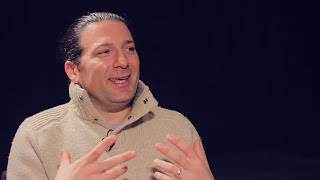In Chapter 6 of 21 in his 2012 Capture Your Flag interview, design educator Jon Kolko answers "How Has Reflection Contributed to Your Leadership Development?" Kolko begins by discussing how he has incorporated reflection into the curriculum experience for his design students. He continues detailing is own reflective process and why it is important to have the inner dialogue before making bold, provocative statements.
Jon Kolko the founder and director of the Austin Center for Design. He has authored multiple books on design, including "Wicked Problems: Problems Worth Solving." Previously he has held senior roles at venture accelerator Thinktiv and frog design and was a professor of Interactive and Industrial Design at the Savannah College of Art and Design (SCAD). Kolko earned his Masters in Human Computer Interaction (MHI) and BFA in Design from Carnegie Mellon University.
Transcript:
Erik Michielsen: How has reflection contributed to you leadership development?
Jon Kolko: It plays a huge role in the process of design sort of outside of my own personal experiences. We bake into the curriculum constant reflection from the students at Austin Center for Design. So a typical agile MVP or always in beta process is one where you do stuff and then you test it and then there has to be a moment where you stop and you go like, “What just happened?” And that is reflection and it’s incredibly easy to skip that and to simply impulsively respond to data rather than interpreting it.
Reflection is a form of interpretation and so it's an assignment of meaning and it's going to be wrong sometimes. And so, it's easy to skip and simply use the data at face value which will also be wrong sometimes but it feels safer. I have found that the more interpretation and reflection that occurs, the more risky it is to build on that reflection but when you do build on it, the more likely it is to lead to large and magical, and powerful changes.
And so we do a couple of things formally in our curriculum that drive toward reflection, like I have the students do a, it was called something much more academic and they changed to a peak of the week, so a p.o.w. every week. So they film themselves and they say, “What did you this week about entrepreneurship?” And, “What did you learn this week about entrepreneurship?” And simply saying it is often just enough to provoke that reflection. Actually, watching it is huge. For me, I think I'm overly contemplative because one, I have that constant just self-doubt that I'm not doing enough and I'm not doing as good as I could and I could always be doing more and then second, there's this idea that if I'm going to go out there and say large, provocative statements, damn it, I better be right.
And I feel like I owe it at least to myself to have that sort of inner dialogue about saying things like problems worth solving and abandon your day job at a big corporation or consultancy and go work on poverty and nutrition. Those are aggressive statements even to me. And so I should really have thought deeply about what it is that I'm talking about. I do like to think of active reflection versus passive. Many designers that I know struggle with internal mood disorders and that’s a path and form of reflection. It's self-destructive and it doesn’t go anywhere. There's a form of active reflection through making where you can -- as simple as writing down your thoughts is a form of it but you can also diagram your thoughts and you can draw them, and you can create art and things like that. It's a much healthier form of reflection. And so, I try to personally lead to the second.





















